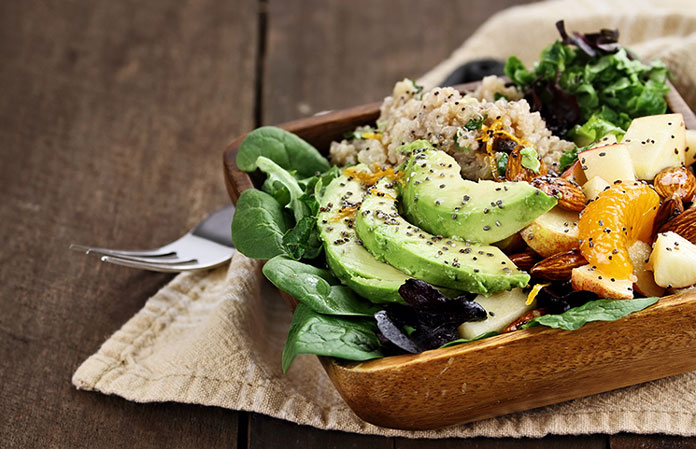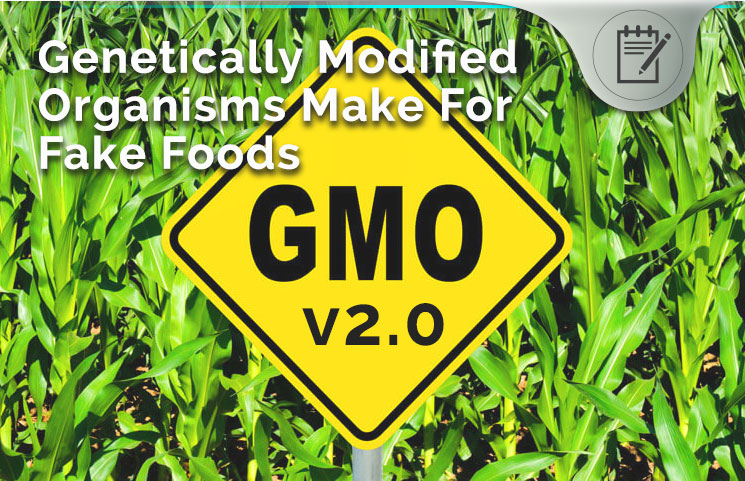Have you ever eaten genetically modified foods? Most of you are likely going to dispute this, but probably you have without even knowing.
The Genetically Modified Organisms, better known as the GMOs, have been in our food for over 20 years now, but this has been changing of recent with new methods used to cut the gene sequences.
Scientists have developed ways to edit and silence certain genes, as well as produce compounds that have the same taste like food, but are not naturally grown as the food we know.
Have you heard about the apples that do not rot? We also have synthetic vanilla that has been developed through genetically engineered yeast, and there is also canola that has had its DNA edited so that it can resist pests during the growing process.
Well, this is just a tip of the iceberg of the GMOs that are making their way directly to your dinner table without you even realizing. These are not the GMOs we know that exist through breeding, but the GMO 2.0 version, as they are the latest version of genetically modified foods where new methods have been used to cut and change the DNA sequence entirely.
However, the most disturbing thing about the new GMO 2.0 is the new law passed by the former President Obama about the labeling of the GMOs. The laws give the GMOs producing companies the freedom to use the QR codes or just numbers in place of plain English names on their labeling.
This means that it could be quite difficult for one to know whether they are eating genetically modified foods or not. The vague naming of foods can even allow the regulatory bodies to exempt most GMOs foods from even being labeled.
How will you know you’re eating GMOs? Here are some few basics about GMOs that you need to know before you head out to do your food shopping next time:
The GMOs have been with us officially for over 20 years. However, the newest GMOs 2.0 are produced using the latest methods to cut and change the gene sequences. The new methods are more precise and include:
- The RNA gene sequencing technique that turns off certain genes
- Gene editing that makes small genetic changes or inserts a new genetic material
These methods are new, but can still cause unintended effects, despite being more precise. Changing the genetics of any organism always makes them behave differently. There is little study on the health and environmental effect of these changes. The technique in the creation of the GMO 2.0 might be different, but the traits will remain the same.
Food and cosmetic industries are now experimenting with what we call synthetic biology. The artificial compounds produced taste all the same, like the food we already know and love, but are made differently.
Some of the GMOs 2.0 that are already on the market or making their way into the market includes:
- Fake cow’s milk made from genetically engineered yeast. This is what we call the animal replacement products.
- A synthetic version of ingredients like vanilla, stevia, saffron, and much more.
- Synthetic personal care products like the squalane moisturizer, patchouli fragrance, and rose oil.
- We also have the non-browning apples that are growing in the fields and expected in the stores early next year.
- There are GMO potatoes in stores that have been engineered with the RNAi to prevent them from turning brown on exposure to air. These have low levels of carcinogen (acrylamide) when they are baked or fried.
Most of the companies producing these products are not labeling them as GMOs, but instead use names that mean they are GMOs, ones that consumers will not understand.
A good example is naming the foods things such as “fermentation derived.” When you see such names, always know these foods are GMOs.

Common Problems With The GMOs
Companies should perform enough research studies about the impacts of the GMOs on the environment and the health of individuals in the long run before they place products in the markets for sale.
How do the foods affect farmers, communities, and other things? Here are some common problems of GMOs that you must be aware of before heading out to the grocery store:
The GMO 2.0 Are Highly Unpredictable
GMOs have always had unexpected results. The first line of GMOs resulted with unwanted toxic compounds that the scientists did not predict. The synthetic biology companies might present that their foods are reliable and predictable, but that is far from the truth.
The next generations of GMO 2.0 are even more unpredictable and might present more unexpected results in the long run. There are not enough experiments or studies done, and genetics remain poorly understood up to now.
There Are No Proper GMO Regulations In Place
Despite the government understating about GMOs, the government is either not interested in regulating them or lack the required capacity to regulate the GMOs. There is no oversight to look after the effects of the GMOs on the health of people, the environment, and their social impacts.
Lack Of Enough Evidence To Support The Sustainability Claims Made By Scientists
GMOs were first produced because they are thought to be more environmentally efficient, but where is the evidence to support that? Most of the GMOs 2.0 products depend on foods, like sugars and other polluting feedstock, and that can become a living pollution issue if they escape into the environment.
GMO 2.0 Pose A Danger To Farmers
GMOs pose the risk of replacing farmers worldwide. There are many GMO chemicals and patented seeds that are already replacing farmers in most developed countries. The increase of GMO products in the market is likely to replace the ingredient based plants by farmers that has been proven to be sustainable.
Most farmers across the world have a genuine concern about synthetic biology foods that tend to cost less, look appealing, but have unpredictable effects on the health of people and the environment. A high number of small farmers feed the world and depend on the earnings from their produce to provide for their families.
The introduction of artificial foods is likely going to replace them and kill their earnings. This will also affect the fields and the plants, along with the web of life that lives in such fields.
Getting Big Corporations To Take Charge
GMOs will enable the big corporations to take charge of our foods systems. The companies that have patents for their products, which will allow them own the seeds to life, which is a scenario that does not look great for our futures.
Most corporations might use their power and money to influence the food systems for the sake of making profits and not protecting the people and the planet as they promised.
Fake Foods And Fake Promises
GMO companies have promised for years now to reduce hunger throughout the world and produce enough food for all people. How many people go hungry worldwide, yet our farmlands are still filled with pesticides? There are even new claims that synthetic biology will even help combat the changing world climate.
GMOs will decrease the pressure on land and help save the endangered animal species. You can read these claims as true or as fake promises that are aimed at making people embrace the GMOs. These are just hype in the industry to help get new investors and keep the regulating bodies away.
There should be enough evidence by these companies to support those claims and show the sustainability of the GMOs, but they have been unable to produce that.
We need to build a food system and stop relying on the fake claims and fake promises that do not seem to offer anything. We need food systems that support the small farmers and prevent the big corporations from taking charge of our food systems.
What Consumers Want Is Real Food
The trend in the consumer marketplace shows that consumers are interested in real food and not just some cosmetics that resemble food and taste like foods, but are made artificially. Our bodies need natural nutrients from foods grown by real farmers and not things synthesized in the laboratories.
Consumer reports have shown that big packaged food companies have lost huge investment as people reach more for the fresh, organic foods.

Ways To Avoid Buying GMO 2.0 Unknowingly
Always go for the organic foods that have been grown in areas without pesticides or chemicals. Organic farmers do not use any pesticides, chemicals, or genetically engineered products.
Always take a look on the labeling of foods, looking for Made Safe and Non-GMO Project verified foods. These foods have been certified to have been grown naturally without any genetic engineering.
Avoid foods with terms like fermentation derived or non-browning.
Stay updated on the latest synthetic biology products in the market and have a list of the health foods that are safe to buy.
GMO 2.0 Final Verdict
Is genetically engineered food the future? The answer is a definite NO, as trends show people prefer naturally grown foods to the artificial ones. In fact, the few that buy the GMO 2.0 do it unknowingly, as the labels do not show whether the foods are GMOs or not.
Congress should create new strict laws that force the big GMO corporations to label their foods as GMOs in clear language so that customers know exactly what they are buying.









